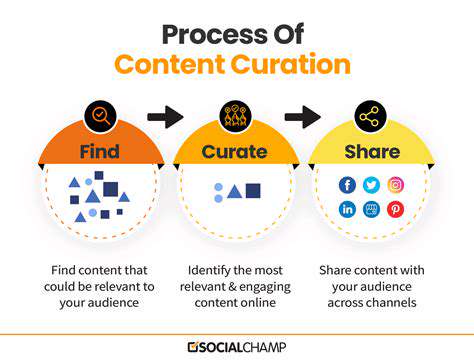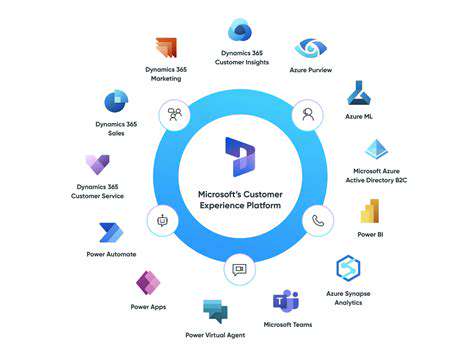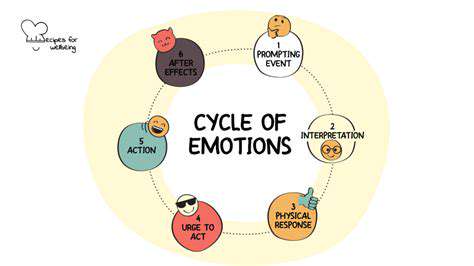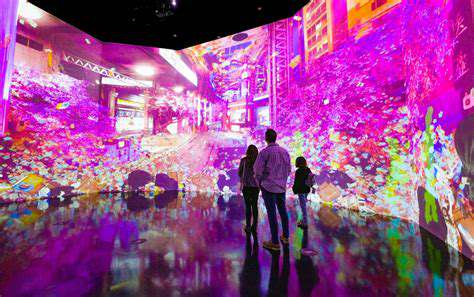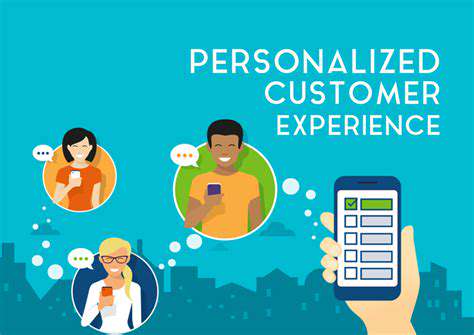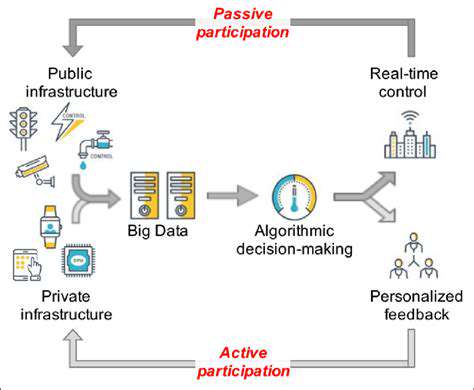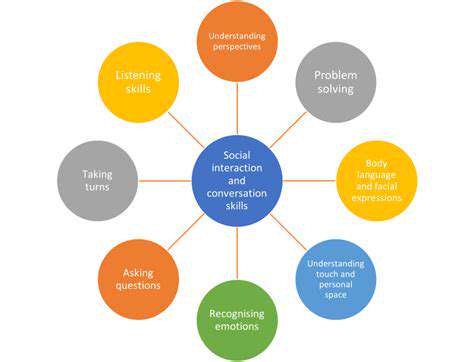Designing for Empathy and Connection in Immersive Worlds
Beyond the Visuals: Understanding User Needs
Effective interface design transcends mere aesthetics. It demands a deep understanding of user psychology and behavior patterns. Identifying your audience's core motivations isn't optional - it's the foundation of successful design. This requires going beyond traditional surveys to incorporate ethnographic research, behavioral analytics, and iterative prototype testing. The most impactful designs emerge from observing real users interact with products in their natural environments.
Usability isn't just a feature - it's the backbone of user retention. While visual appeal grabs attention, intuitive navigation keeps users engaged. Prioritize cognitive flow through strategic information architecture, predictable interaction patterns, and context-sensitive guidance systems. The difference between a good and great design often lies in eliminating friction points that most users never consciously notice.
Crafting a Meaningful User Journey
Every touchpoint in the user experience should tell a cohesive story. Think of your design as a skilled tour guide - anticipating needs before they arise, providing just enough information at each step, and creating moments of delight that transform utilitarian tasks into memorable experiences. This narrative approach to UX builds emotional investment that mere functionality can't achieve.
Prioritizing Accessibility and Inclusivity
Truly inclusive design acknowledges the spectrum of human ability and experience. It's about creating interfaces that adapt to users rather than forcing users to adapt to interfaces. Beyond WCAG compliance, consider how typography choices affect dyslexic readers, how animation speeds impact users with vestibular disorders, and how color symbolism varies across cultures.
Accessibility isn't charity - it's smart design that benefits all users. Features like keyboard navigation and high-contrast modes often improve the experience for power users and situational disabilities (like using a device in bright sunlight). The curb-cut effect demonstrates how inclusive solutions frequently create unanticipated benefits for broader audiences.
Leveraging Technology for Enhanced Engagement
Emerging technologies offer powerful tools for personalization, but the magic happens when they're applied subtly. AI-powered adaptive interfaces can remember user preferences without being intrusive. Haptic feedback can provide subtle confirmation without visual clutter. The most effective technological enhancements feel like natural extensions of the user's thought process rather than flashy additions.
Maintaining a Continuous Improvement Mindset
Launch day is just the beginning of the design lifecycle. Implement robust analytics to track real-world usage patterns, establish feedback loops with your user community, and create mechanisms for rapid iteration. The products that stand the test of time aren't perfect at launch - they evolve intelligently with their users. This requires building flexibility into your design system and maintaining a culture that views each piece of user feedback as valuable data rather than criticism. Iterative design isn't about fixing mistakes - it's about uncovering opportunities you couldn't see during initial development.
Building Meaningful Relationships in Digital Spaces
Cultivating Trust in Online Interactions
Digital trust is fragile and precious. Build it through consistent transparency about platform policies, visible indicators of authenticity (without being intrusive), and clear pathways for conflict resolution. Consider implementing reputation systems that reward positive participation while making consequences for toxic behavior immediately apparent. The most successful platforms make users feel protected, not policed.
Creating psychologically safe spaces requires more than content moderation - it demands thoughtful architecture. Design discussion flows that encourage reflection before reaction, implement features that highlight common ground, and provide tools for self-regulation. The goal isn't to eliminate disagreement but to create containers where differing perspectives can coexist productively.
Designing for Authentic Communication
Depth in digital communication requires breaking the tyranny of the text box. Introduce structured formats that guide users toward substantive exchanges - think threaded discussions with character minimums for top-level posts or prompts that encourage personal storytelling. The medium shapes the message, so design mediums that elicit the kinds of interactions you want to cultivate.
Multimodal expression tools can bridge the emotional gaps in digital communication. Consider how audio messages convey tone that text misses, or how video allows for nonverbal cues. But beware of feature overload - sometimes constraint breeds creativity. The most effective platforms provide expressive flexibility without overwhelming users with options.
Creating Opportunities for Shared Experiences
Synchronous interactions create bonds that asynchronous communication can't match. Design moments of shared discovery - live collaborative activities with visible participant avatars, real-time reaction streams during events, or co-creation spaces where contributions are immediately visible. The magic happens in those unscripted moments between structured activities.
Community isn't built through features alone - it's cultivated through ritual. Design recurring events that become traditions, recognition systems that celebrate meaningful contributions (not just popularity), and pathways for mentorship between experienced and new members. The most vibrant digital communities feel alive because members invest in maintaining their culture.
Encouraging Active Listening and Empathy
Digital spaces often reward speaking over listening. Counter this by designing interfaces that highlight under-voiced perspectives, implement read before responding mechanisms, and create visualizations of conversation dynamics that show who's being heard and who's being overlooked. True connection requires balancing expression with reception.
Empathy grows through perspective-taking. Design exercises that gently guide users to consider alternative viewpoints - perhaps through role-playing features or scenario-based discussions. But avoid heavy-handedness - the most effective empathy-building feels like discovery rather than instruction.
Promoting Inclusivity and Accessibility
Inclusive design in social spaces means accommodating diverse communication styles. Some users express themselves best in long-form writing, others through quick reactions, still others through visual contributions. Provide multiple pathways for participation while maintaining enough structure to prevent fragmentation.
Accessibility in community platforms extends beyond technical compliance. Consider how your design handles varying levels of digital literacy, social energy (introverts vs extroverts), and cultural communication norms. The most inclusive spaces make everyone feel equally empowered to participate in their own authentic way.
Leveraging Technology to Enhance Human Connection
The most powerful connection technologies often operate in the background. Smart matching algorithms can surface relevant connections without being creepy. Context-aware interfaces can reduce social friction by providing just-in-time information about conversation topics. The goal is to use technology to facilitate human connection, not replace it.
Emerging technologies like spatial computing offer intriguing possibilities for digital intimacy - shared virtual environments where presence and proximity can be simulated meaningfully. But the core challenge remains the same: how to use these tools to create moments of genuine human recognition rather than just flashy experiences.
Leveraging Non-Verbal Communication and Emotional Cues
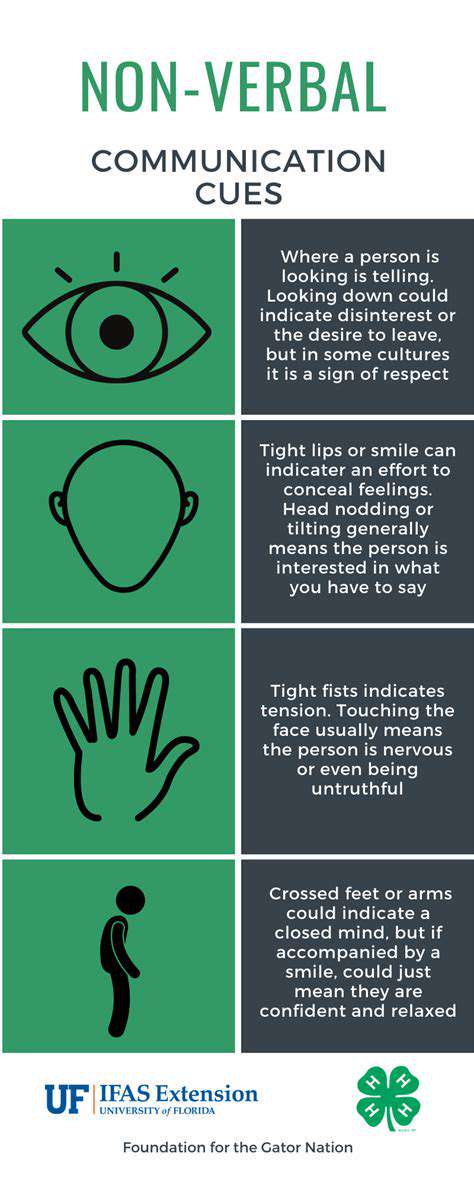
Understanding Non-Verbal Cues
In digital spaces where traditional nonverbal cues are absent, designers must create new forms of emotional signaling. Micro-interactions, animation timing, and even loading sequences all convey personality and intent. The most intuitive digital products communicate their state as clearly as a facial expression or posture. This requires viewing every element of the interface as a potential emotional signal.
The Power of Eye Contact
In video interfaces, eye contact becomes a design variable. Consider how speaker framing, gaze direction in avatars, and even the placement of video feeds affect perceived engagement. The difference between feeling seen and feeling observed often comes down to subtle design choices in how visual attention is represented.
Body Language: A Silent Language
Digital body language emerges through interaction patterns - the speed of responses, the care in composition, even the use of whitespace in messages. Design systems can encourage more thoughtful communication through intentional constraints. For example, delay mechanisms that prevent instant replies might foster more considered responses, mimicking the natural pauses in face-to-face conversation.
Facial Expressions: Mirrors of Emotion
Emoji and reaction systems have become the facial expressions of digital communication, but most implementations are woefully limited. Consider designing more nuanced emotional palettes that capture complex states like hesitant agreement or enthusiastic skepticism. The right expression tools can elevate digital discourse from transactional to truly conversational.
Tone of Voice: Adding Depth to Communication
In text-based communication, tone is constructed through typography, pacing, and compositional style. Design systems can help users convey tone more effectively through smart formatting suggestions, contextual emoji recommendations, and even sentiment analysis that prompts users to clarify potentially ambiguous phrasing.
Proxemics: The Importance of Space
Digital proxemics involves designing comfortable interpersonal distances in virtual spaces. This might mean giving users control over their visibility settings, creating graduated levels of connection (from public posts to private messages), or visualizing social networks in ways that help users navigate relationship boundaries.
The Impact on Professional Settings
Professional digital communication requires especially careful nonverbal design. Email templates that guide appropriate formality, meeting tools that establish clear participant roles, and collaboration platforms that balance visibility with privacy all contribute to effective virtual work environments. The most effective professional tools help users project their intended professional persona despite the mediation of technology.
Ethical Considerations and Accessibility
Accessibility for Diverse Users
True accessibility means designing for the full range of human diversity - not just documented disabilities but also situational limitations, temporary impairments, and the natural variations in how people process information. This requires moving beyond checklist compliance to embrace flexible systems that adapt to individual needs without requiring special configuration.
Promoting Inclusivity in Design
Inclusive design starts with examining your own blind spots. Assemble diverse design teams, engage with marginalized communities not as token validators but as co-creators, and build processes that continuously surface unexamined assumptions. The most inclusive products often emerge from design cultures that welcome uncomfortable questions about their own limitations.
Ethical Considerations in Data Collection and Use
Data ethics extends beyond privacy policies to consider the power dynamics inherent in information gathering. Implement data collection methods that maximize user agency - perhaps through granular consent controls or innovative approaches like differential privacy. The most ethical designs often find ways to achieve their goals while collecting the minimum data necessary.
Maintaining Transparency and User Control
Design transparency as an active feature, not just a legal requirement. Create intuitive dashboards that show users exactly how their data is being used, implement plain-language explanations of algorithms, and provide meaningful (not just symbolic) control mechanisms. The most trusted products make users feel like informed partners rather than data subjects.
Read more about Designing for Empathy and Connection in Immersive Worlds
Hot Recommendations
- Immersive Culinary Arts: Exploring Digital Flavors
- The Business of Fan Funded Projects in Entertainment
- Real Time AI Powered Dialogue Generation in Games
- Legal Challenges in User Generated Content Disclaimers
- Fan Fiction to Screenplays: User Driven Adaptation
- The Evolution of User Driven Media into Global Entertainment
- The Ethics of AI in Copyright Protection
- Building Immersive Narratives for Corporate Training
- The Impact of AI on Music Discovery Platforms
- AI for Audience Analytics and Personalized Content
